The changing global landscape of drug discovery
Several trends have converged over the last two decades to disrupt the traditional model of pharmaceutical R&D. Large biopharma is finding it increasingly difficult to deliver a steady flow of effective new drugs and to realize the same historical returns on their R&D investment. At the heart of this problem has been a steady decline in the number of new approved drugs relative to the money spent to develop them.
Chart from Scannell et al. (1)
Although R&D investment has increased over recent decades, the resulting number of new drug approvals has not risen at the same rate. In fact, the number of new drugs approved by the FDA per billion US dollars spent on research and development (inflation-adjusted) has halved roughly every 9 years (Ref. 1). A highly cited 2007 study from Tufts calculated the cost to bring one new biopharmaceutical to market to be over $1 billion (Ref. 2) and in 2014 the same group revised their estimate upwards to $2.6 billion!
Figure from Kaitin (Ref. 3)
Multiple factors are contributing to the decline in R&D productivity and some are unavoidable due to the nature of the drug industry. The principle reasons, however, are usually described as follows:
1. To create something better continues to be more difficult. New drugs often have the burden of demonstrating superiority over not only placebo but over existing drugs, some of which have been on the market long enough for generics to have become available. Unlike iPhones or automobiles, these older drugs don't lose market share simply because they go out of style. Previous blockbusters eventually become generics and new drugs face the added challenge of competing against these lower priced alternatives.
2. Regulators are expecting more. Drug regulatory agencies' first priority is to ensure drug safety. This is a good thing, however over time there has been a continual lowering of the tolerance for risk. The reasons are complex but due primarily to public and political pressures, past safety misfortunes and the fact that existing approved drugs continue to set a high bar for both efficacy and safety. More rigid regulatory requirements mean larger and longer trials, increasing costs.
3. Too much money spent on poor models. In the face of eroding pipelines, much of the industry responded by throwing money at the problem and taking more shots on goal. Unfortunately, this is not a solution unless founded on solid science and good predictive preclinical models. Advancing more programs into clinical trials will not lead to more approvals unless the scientific rationales are sufficiently sound. For example, the industry previously over-relied on poorly predictive (and sometimes poorly reproducible) mouse models to predict human efficacy. Drug development organizations are learning how to use models more intelligently (and to use better models) and are integrating more predictive human data into target validation algorithms.
The decline in R&D productivity is only one of the challenges currently faced by the industry. The so-called patent cliff is now affecting many of pharma’s most lucrative products. In 2011 alone, $50 billion in combined pharmaceutical annual sales were lost to patent expiry (Ref. 4). Finally, drug prices and costs are being scrutinized more intensely worldwide and healthcare budgets are becoming more constrained. Under these enormous pressures, large biopharma companies are cutting R&D expenditures, laying off thousands of skilled workers and consolidating research sites and therapeutic areas of focus.
New models of drug development are emerging
Against this backdrop of declining R&D productivity and reduced return on investment, the industry is starting to embrace new models of sustainable drug development. One aspect has been to externalize more of the R&D process and to emphasize licensing and acquisition to bring in new assets. With this approach, companies draw from a much broader pool of innovation and discovery. It's estimated that approximately 75% of large biopharma's current late stage pipelines have originated from external sources. In addition, the fraction of venture or licensing investment spent on preclinical assets over the last 10 years has been steadily increasing. (See chart below). This is leading to intensified competition and increased value for well positioned and de-risked assets (some specific examples of this are provided below).
Chart adapted from Ref. 5
Consequently, other entities such as small biotech companies, universities and institutes are now able to play an expanded role in the drug development ecosystem by participating more actively in the translational science needed to advance preclinical programs. This includes such activities as modality selection, lead identification, early pharmacology, toxicology and PKDM, etc. These activities also correspond to the R&D sweet spot where both key milestones (such as getting a clinical candidate in hand) and initial proof of concept can be realized. In some cases, this takes place within the labs of formalized translational research centers closely aligned with academic research centers; for example, the MRCT in the UK, the CDRD in Vancouver BC, or the NIH-sponsored NCATS. Alternatively, more virtual models can be created that involve industry-trained consultants and CROs. The illustration below indicates how different players, including CDDG, can interact and contribute to this new type of collaborative R&D network.
How CDDG fits into a new model for early drug development
Regardless of the path to achieving it, value is generally proportional to asset maturity and proximity to proof of concept milestones. Therefore, even early stage asset development activity that leads to meaningful molecule advancement or actionable insights can create a robust return on investment. CDDG can help you find the most efficient strategy for development to these milestones and getting the most out of your opportunity.
Some specific examples
Below are some examples of recent deals that demonstrate the value of this new approach to drug development.
With help from a biomedical accelerator, Harvard recently licensed a preclinical small molecule program to Merck for $20 million.
The MRCT, who contributed to early stage development including humanization of Merck’s Keytruda (anti-PD1), recently monetized a portion of their royalty stake in the blockbuster drug for $150 million.
Children’s Hospital of Philadelphia (CHOP's) early investment in developing a new gene therapy paid off with the creation of Spark Therapeutics. CHOP recently raised $42 million from the sale of a portion of their share holdings.
Similarly, the Fred Hutchinson Cancer Research Center in Seattle, who owns a stake in Juno Therapeutics based on its early contribution to technology development, saw its holdings worth $154 million in 2016 and could rise even higher.
References cited
1.Scannell J, Blanckley A, Boldon H & Warrington B. Diagnosing the decline in pharmaceutical R&D efficiency. Nature Reviews Drug Discovery. 2012; 11, 191-200.
2. DiMasi JA, Grabowski HG. The cost of biopharmaceutical R&D: is biotech different? Managerial Decision Econ 2007;28:469–479
3. Kaitin K. Deconstructing the drug development process: the new face of innovation. Clin Pharmacol Ther. 2010; Mar;87(3):356-61.
4. Wilson D. Drug Firms Face Billions in Losses in ’11 as Patents End, The New York Times. March 8, 2011
5. Thomas D. & Wessel C. Emerging Therapeutic Company Investment and Deal Trends, Bio Industry Analysis white paper. June 2016.


